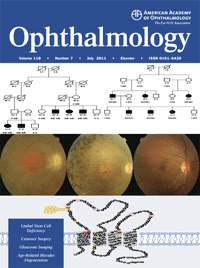drraheel@gmail.com

In the year 2005 the lab of Prof. Dr. Raheel Qamar, T.I. started working on Ophthalmogenetics of Pakistani patients with emphasis on the screening of monogenic and multifactorial eye diseases. Since then the lab has been conducting genetic analysis of non-syndromic and syndromic retinal dystrophies, glaucoma, age related macular degeneration, keratoconus and diabetic retinopathy in Pakistani patients. All these projects have been conducted at the Molecular Genetics Lab, Department of Biosciences, COMSATS Institute of Information Technology, Islamabad, Pakistan in collaboration with local hospitals and international collaborators. The aim of this work is to elucidate the molecular causes and disease mechanisms underlying different eye diseases in Pakistan.
In Ophthalmogenetics, the said lab is the first in Pakistan to analyze retinal dystrophies using high throughput microarray based genotyping and exome sequencing for gene identification and mutation detection. In the last couple of years the groups investigations in the field of Ophthalmogenetics has resulted in the identification of novel RP causing genes including IMPG2 and CLRN1. In addition they have identified novel mutations in known retinal genes e.g. CNGB1, CRB1, CNGB3, CNGA3, EYS, GRK1, RDH5, PDE6B, BBS1, and BBS10, while a number of novel gene/loci have also been identified, which will be reported soon. These genetic analyses conducted by the group has positive implications in the correct diagnosis of misdiagnosed phenotypes as well as clinical management and genetic counseling of individuals suffering from the disease, this has been very elegantly demonstrated in a number of different cases, which have been published in leading international journals.
It has been proposed by the group that diagnosis of retinal diseases based upon genetic analysis is achievable, for instance in the case of Oguchi disease, SAG and GRK1 genes can be directly sequenced in patients suffering from Oguchi disease like phenotype. While the patients with stationary night blindness, sub-retinal spots and delayed dark adaptation can be sequenced for RDH5 as patients having such symptoms usually carry mutations in the RDH5 gene. Bardet-Biedl syndrome is characterized by rod-cone dystrophy with at least three additional non-ocular features such as intellectual disability, obesity, polydactyly, hypogonadism, or renal anomalies as primary manifestations. The genes of these patients can be sequenced for the 17 known BBS genes as more than 50% patients are found to carry causative mutations in these genes.
For gene identification the family studies are being supplemented with studies of sporadic cases of retinal anomalies, for which case-control association studies have been undertaken. So far the group has identified association of glaucoma with a number of different polymorphisms in genes including eNOS, HSP70, TNF alpha, MTHFR, GST, LOXL1, XPD and XRCC1. In addition in diabetic patients with retinal dystrophy association with PPARγ gene polymorphism has been reported. Data of other ophthalmic disorders are currently being analyzed and will be published soon.We invite Ophthalmologists and researchers from all over Pakistan who are working on these disorders to collaborate with us and to explore the genetic basis of these eye disorders in Pakistan and to work together to establish advanced therapeutic interventions for such patients.